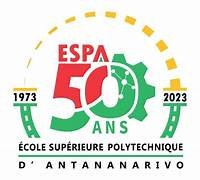Bombetoka mangrove and climate: carbon stored in living Avicennia marina
Résumé
Mangroves offer many services, the most important of which is the mitigation of climate change, more specifically those of Bombetoka. These are almost monospecific, with the Avicennia marina species occupying the entire space. This species is much used by humans and even wildlife. The aim is to determine the carbon storage capacity of the living Avicennia marina species. In the field, botanical surveys were carried out in this ecosystem to identify the location of surveys in the mangroves. Biometric measurements were taken using ecological surveys to identify the species present and their biometric measurements. To assess carbon sequestration potential, the Malagasy Rakotomavo method was applied to determine the biomass of the living Avicennia marina species. Satellite images were used to locate the study area. As results, for a survey made, the species Avicennia marina living in the mangroves of Morahariva and Tambohobe have a high biomass. This is due to the presence of large-diameter and very tall individuals, as well as the number of these individuals. For a given area, 0.01 hectare, there are fewer individuals present. As a result, the biomass is high for mangroves such as Tambohobe, Marofisonko and Anglais. So, to achieve sustainable management of mangroves and mitigate climate change, we need to make people aware that these mangroves are very valuable, and apply and update the laws on mangroves.
Avicennia marina, Bombetoka, biomass, carbon, climate change, sustainable development
References
Allorge L. (2007). Plantes de Madagascar. Les éditions Eugen Ulmer. Paris. 224p.
Andriamalala C. A. J. (2007). Etude écologique pour la gestion des mangroves - Comparaison d’une mangrove littorale et d’estuaire à l’aide de la télédétection. Thèse, Basel. 268p.
Andriamanantena F.H. (2019). Dynamique écologique des mangroves de l'estuaire du fleuve Betsiboka (Nord-ouest de Madagascar) : Approche biométrique et par télédétection. Thèse de Doctorat en Écosystèmes Naturels, N° : 001/2019/EDEN/UMG. Université de Mahajanga. 256p.
Andriamanantena F. H., Ranarijaona H. L. T., Andriaharimalala T., Delaître E., Iltis J. (2018). Adaptation aux changements climatiques des mangroves de la Baie de Bombetoka (Région Boeny, Mahajanga). Article In Acte sur le Colloque scientifique 30èmeanniversaire du CNRE. Antananarivo. Madagascar.
Braun-Blanquet J. and al. (1952). Les groupements végétaux de la France méditerranéenne. Dir. Carte Group. Vég. Afr. Nord, CNRS, 292 p.
Duvigneaud P. (1980). La synthèse écologique. Dion, Paris. 380p.
Duvigneaud P. (1946). La variabilité des associations végétales. Bulletin de la Société royale de Botanique de Belgique. 78 : 107-134.
FAO (2003). Status and trends in mangrove area extent worlwide. Forest resources Assessment working Paper. N°63. Forest Ressources Division. FAO, Rome. Unpublished.
IUCN. (2007). Evaluation report. ID n°1257. 21p.
Ministère de l’eau. (2006). Etude de faisabilité des forages manuels identification des zones potentiellement favorables. Madagascar. 28p.
Mochane M. J. and Mokhena T.C. (2023). Handbook of Carbon-Based Filler(s) Reinforced PLA Biocomposites: Fundamentals to Applications. Books, Environment & Energy, Environmental Sciences, Newly Published Books, Nova, Polymer Science and Technology, Science and Technology, Special Topics. BISAC: SCI097000; SCI026000; SCI050000. DOI: https://doi.org/10.52305/YIPO8060. ISBN: 979-8-89113-184-2. Categories: 2023,.
Rabinowitz P. D. et al. (1983). The separation of Madagascar and Africa. Science, 220: 67–69.
Rakotomavo A. (2018). Aboveground Biomass Estimation of Avicennia marina (Forssk) Vierh. and Rhizophora mucronata Lam. in the Mangoky Delta, SW Madagascar. American Journal of Plant Sciences. 17p.
Rasolofo M. V. (1997). Mangroves and coastal aquaculture development in Madagascar. A paper presented in SAREC-SIDA Regional Workshop on mangrove. Zanzibar


